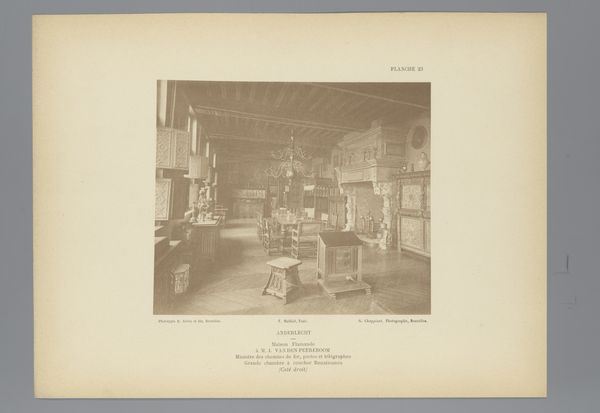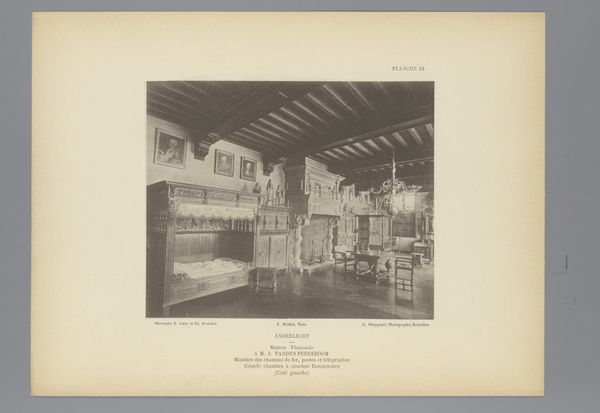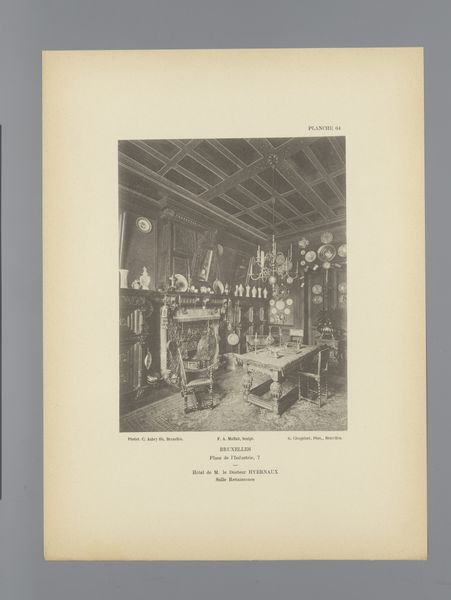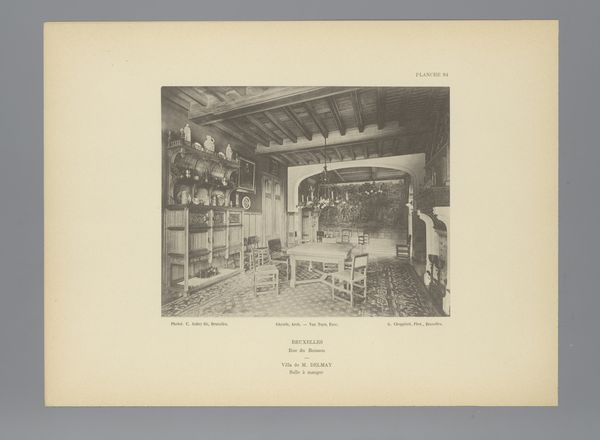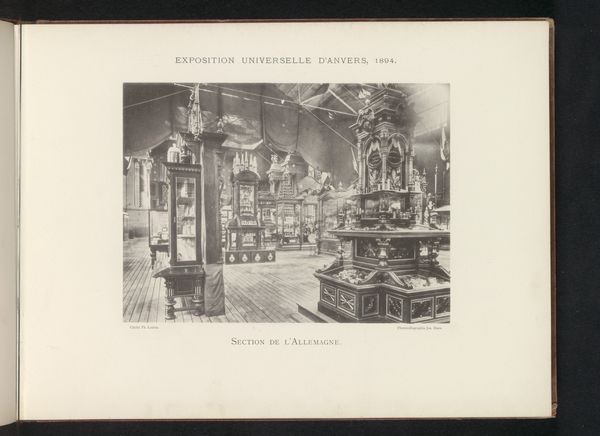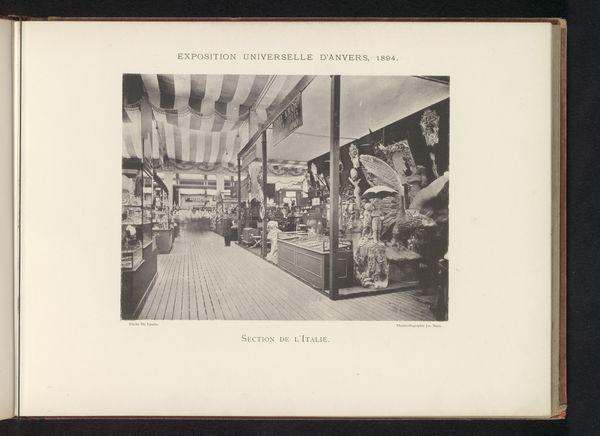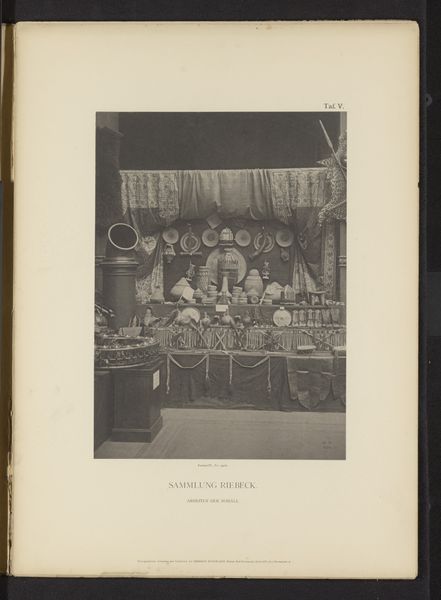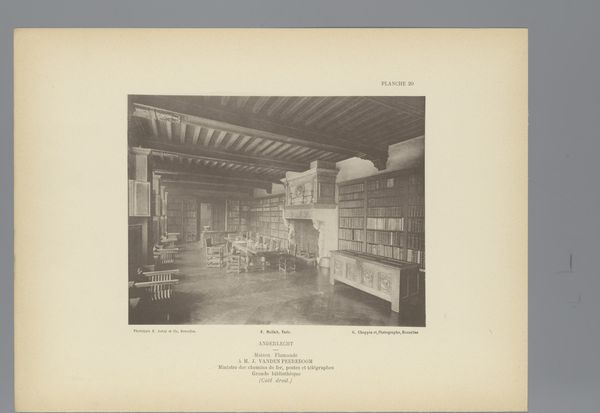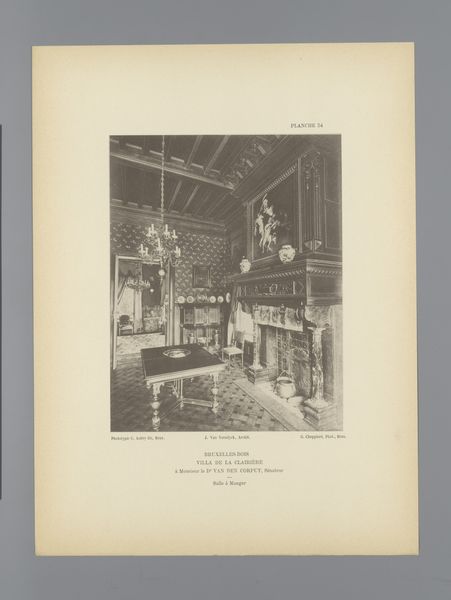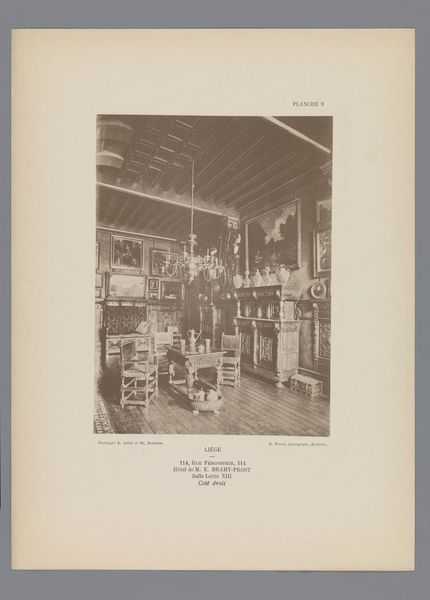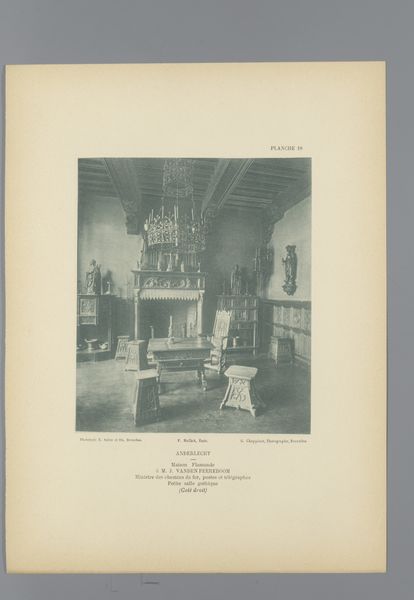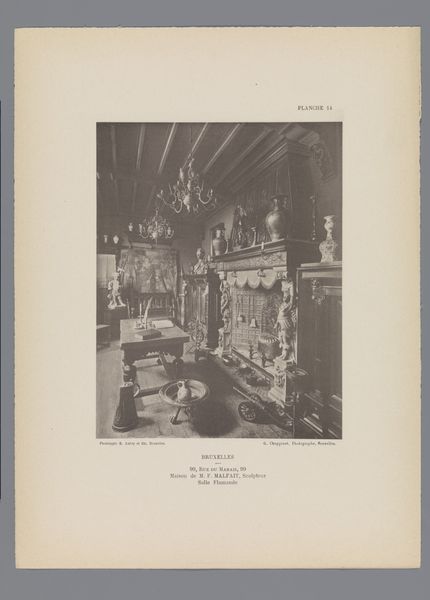
Gezicht op een lage zaal in Vlaamse stijl in het hotel van Edouard van den Corput in Brussel, België before 1898
0:00
0:00
print, photography
# print
#
photography
#
genre-painting
#
realism
Dimensions: height 157 mm, width 202 mm
Copyright: Rijks Museum: Open Domain
Curator: What a fascinating image, this pre-1898 print of a photograph titled "Gezicht op een lage zaal in Vlaamse stijl in het hotel van Edouard van den Corput in Brussel, België," attributed to G. Choppinet. It presents a view of a room styled in the Flemish manner within Edouard van den Corput's hotel in Brussels. Editor: It’s immediately striking! The room feels absolutely crammed with objects. It has a sort of bourgeois clutter. All those plates… It almost overwhelms the eye. Curator: Precisely! The choice of the Flemish style reflects a historical revivalism popular at the time. Displaying this kind of curated "old world" domestic setting, likely spoke to the rising middle class looking to connect with a romanticized past. Think of the Victorian era's embrace of the Gothic. It’s interesting to observe how cultural identity is constructed through the arrangement of material objects in a domestic space. Editor: Absolutely. It seems the arrangement has much to say about the owner’s identity. And that fireplace adorned with what appear to be Delftware… those objects weren’t randomly selected. Each piece holds a specific cultural weight, signaling taste and perhaps even ancestry. They operate like little personal heralds, declaring a particular lineage and a carefully assembled narrative of self. The plates, in particular, remind me of the cyclical nature of trends—displaying collected items was then, and continues to be, a statement of prestige and personality. Curator: A performance of status. Photography, particularly in the late 19th century, was being utilized increasingly as a means of documenting and disseminating these staged representations of taste and affluence. Images such as this contributed to shaping cultural norms, influencing aspirations of domesticity, and feeding into this broader appetite for historical styles in the interior design sphere. Editor: It becomes a tableau of the ideal home. What strikes me most is that despite the lack of human presence, it has so much personality. It’s evocative of intimate moments. A domestic setting carries its own psychology and it gives clues about its inhabitants’ unconscious desires and longings. Curator: Very well said. Examining this piece really invites us to reflect on the narratives that objects tell. Editor: Indeed. It invites contemplation of how we use objects to both express ourselves and, in a way, hide behind them.
Comments
No comments
Be the first to comment and join the conversation on the ultimate creative platform.
